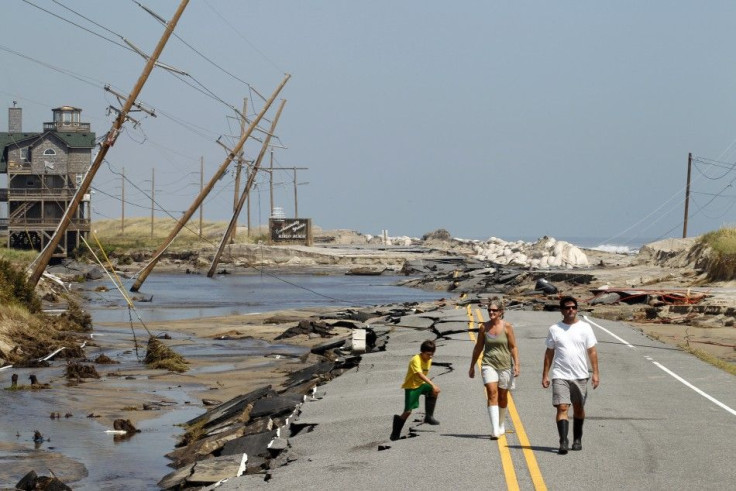Federal Government to Help Reimburse States for Irene Damage

Hurricane Irene could cost U.S. state and local governments billions of dollars in damages, but funds from the federal government might ultimately cover much of this expense.
It is too early to estimate the cost of the storm, but New Jersey Governor Chris Christie said New Jersey alone may have suffered tens of billions of dollars in damage.
The timing is terrible for municipalities as they dig their way out of their bleakest economic period in decades after the financial crisis and recession sank budgets and forced widespread cuts in expense and increased taxes.
But Maryland said the federal government will reimburse the state for 75 percent of what it spends on emergency preparedness and the immediate response to the storm in a trend that may be replicated across the region.
Just how well the United States can handle the unexpected expense is a different question as it battles record budget deficits and growing fears of a double dip recession.
New York Governor Andrew Cuomo said the cost to the state would be high, but mitigated by a federal disaster relief declaration.
Cuomo told ABC News said the bill would come to millions of dollars. It's my guess costs will be in the tens of millions, he said.
He added that President Barack Obama's declaration of emergency for New York would allow the state to be reimbursed for many of the costs of the hurricane.
New York State adopted an on-time budget in April that cut millions of dollars from many high-priority areas, such as education.
It's the last thing we needed now, Cuomo said. We just came through a tough budget session and we didn't need any additional costs.
New York City did not suffer as much damage as had been feared, but still the city's costs will mount up.
Asked if the federal government would pick the overtime the city was spending to keep thousands of employees working in the aftermath of the storm, Mayor Michael Bloomberg on Sunday said, My guess is probably not. Keep in mind, it's is substantial, but the city runs with overtime all the time.
In New Jersey, however, the governor said he expected the costs to be astronomically high.
I've got to imagine that the damage estimates are going to be in the billions of dollars, if not in the tens of billions of dollars, Gov. Chris Christie said in an interview on Sunday on NBC's Meet the Press program.
Obama has declared Virginia was in an emergency, but the state was not certain it had enough damage to meet criteria for a major disaster, which would send it extra federal funds.
This storm wasn't a catastrophe. We can't get in a helicopter and fly by and...call the president and say, 'Yeah this one's a go.' What we have to do is go through a damage assessment process, said the State Coordinator of Emergency Management Michael Cline.
FEMA BEGINS ITS DAMAGE REVIEW
The U.S. Federal Emergency Management Agency announced on Sunday that it has begun its damage review of states affected by the hurricane that left at least 11 people dead.
We are starting assessments in North Carolina, FEMA administrator Craig Fugate said.
Many of the actions governors must take to mitigate the impact of the storm can be expensive, though he said an emergency declaration helps offset the costs with 75 percent funding from the federal government.
He later told a briefing that there are no dollar figures, not at this point and that it would take the federal government several days to begin creating estimates.
The recession hit states' budgets hard, leaving them fewer funds to respond to emergencies and in fiscal 2010, the latest year data is available, the median budget for crisis response fell to $3.3 million from $3.41 million the year before, according to the National Emergency Management Association.
North Carolina, for example, pulled money from its disaster relief funds and other reserves to patch a budget this fiscal year. To save money last year, New York consolidated its homeland security, emergency management, fire control and infrastructure offices. And New Jersey has implemented spending cuts of 10 percent and cut aid to local governments.
Then there are the insured losses to consider.
Catastrophe modeling company EQECAT estimated Irene caused between $200 million and $400 million in insured losses in North and South Carolina, with most of them in North Carolina.
Combined with its estimate of $300 million to $600 million in insured losses in the Caribbean, EQECAT puts Irene's total damage so far at $500 million to $1 billion. EQECAT expects to release loss estimates for more states on Monday.
© Copyright Thomson Reuters 2024. All rights reserved.





















